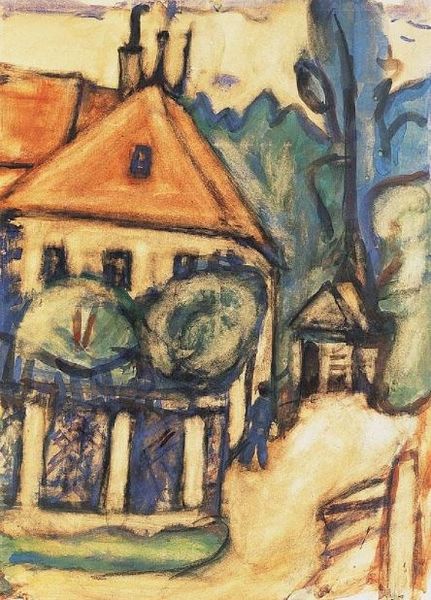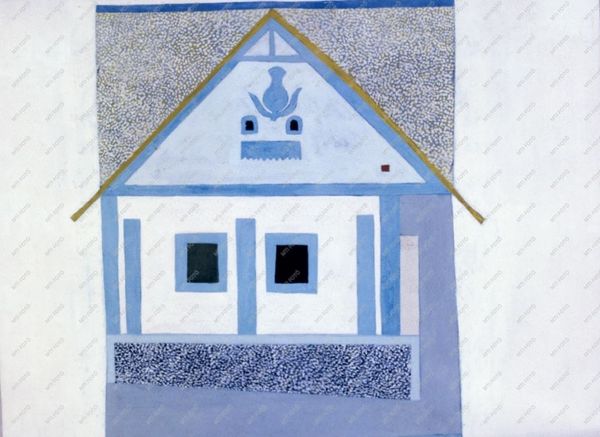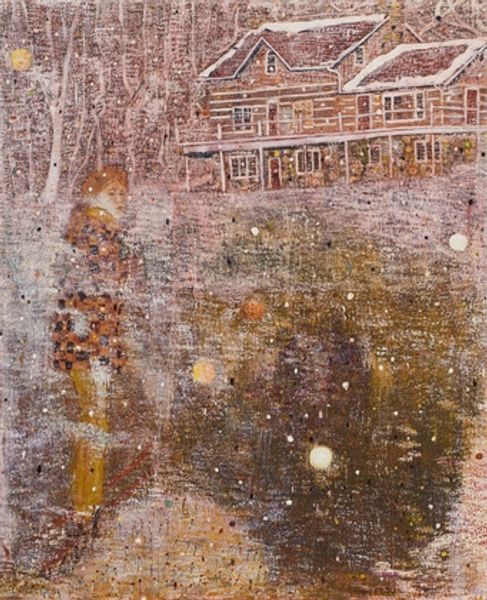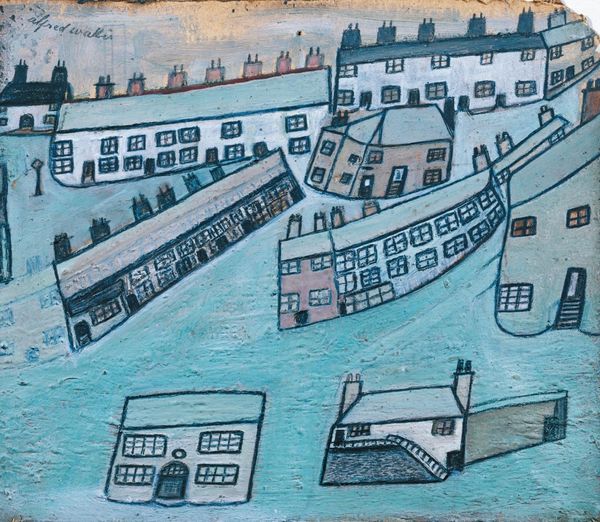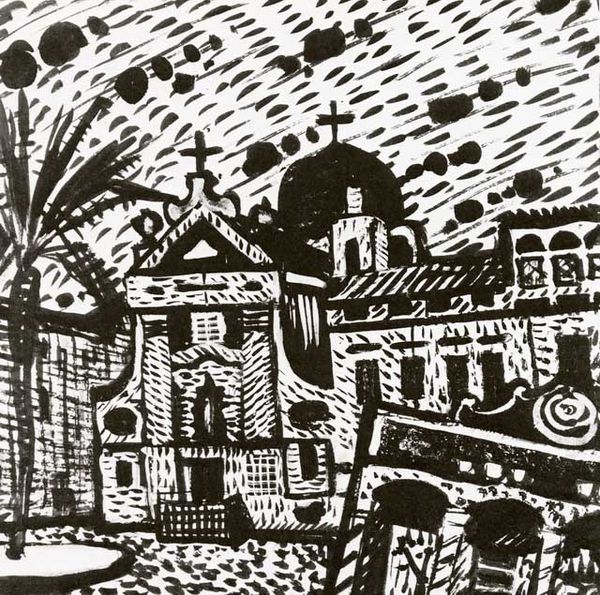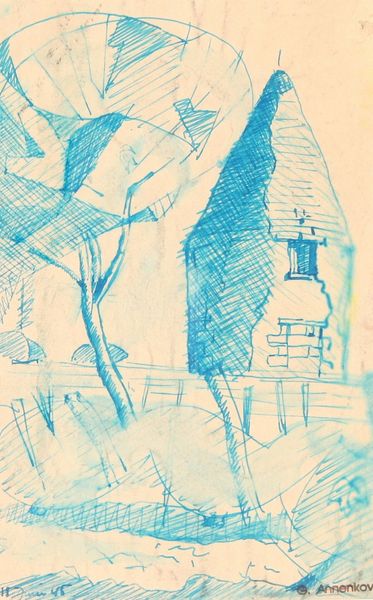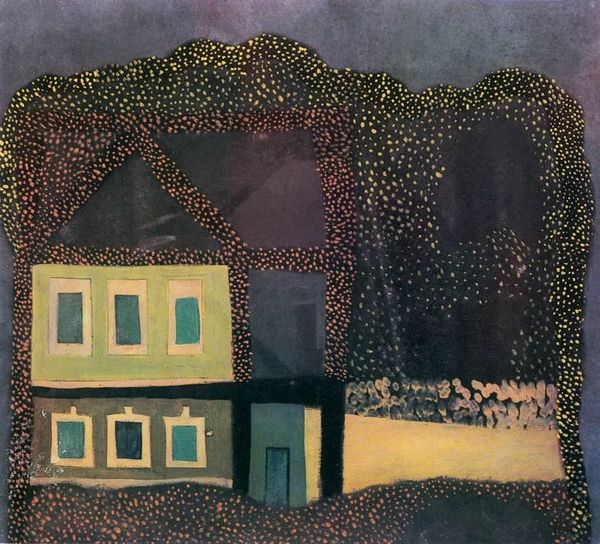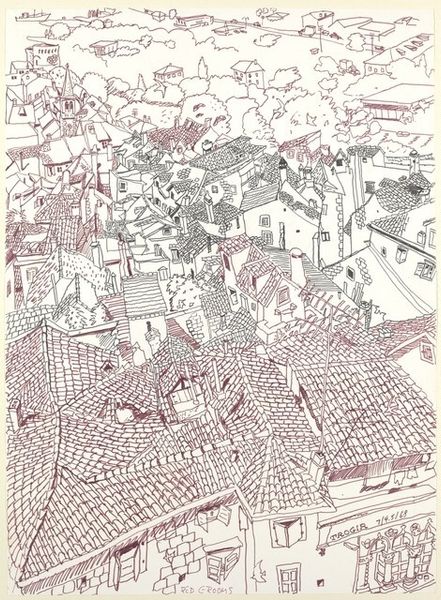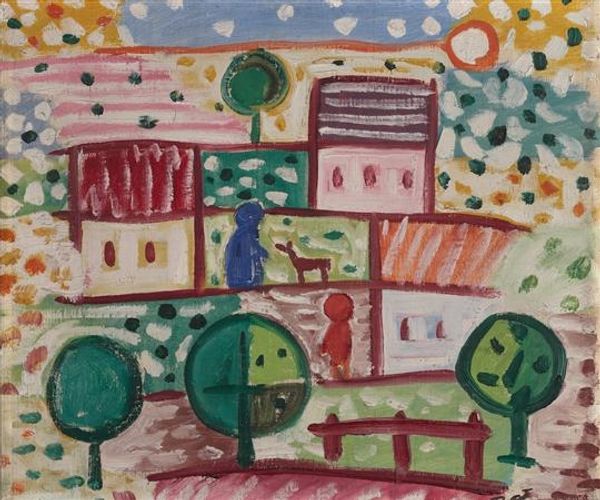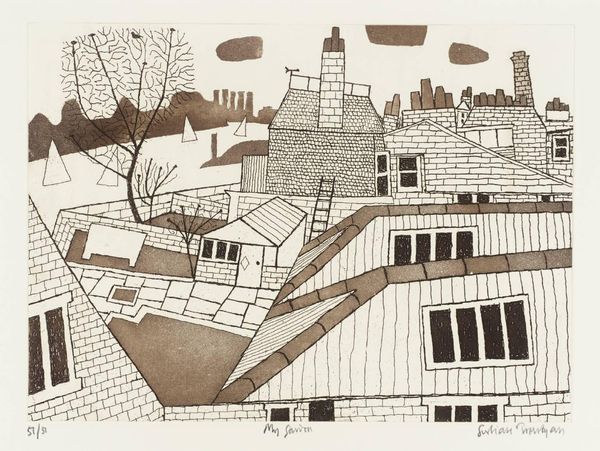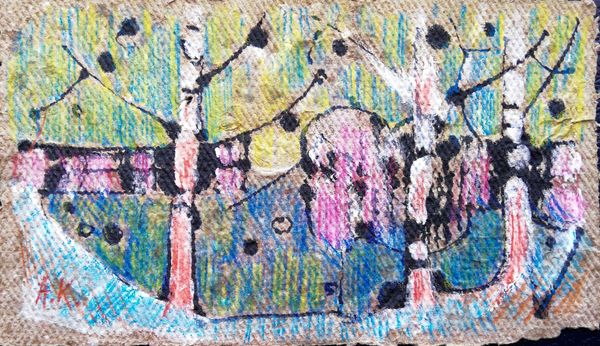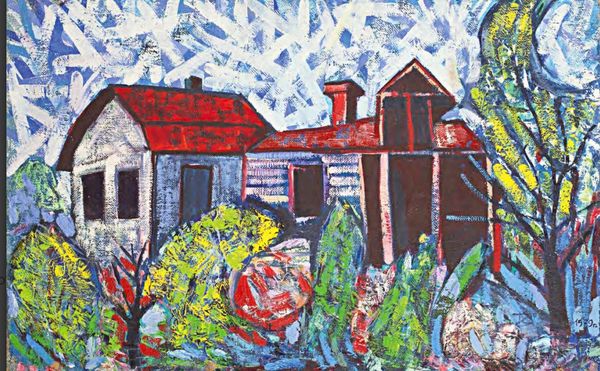
drawing, paper, graphite, architecture
#
drawing
#
paper
#
geometric
#
graphite
#
russian-avant-garde
#
cityscape
#
architecture
Copyright: Public domain
Curator: This is Pavel Filonov's "Houses," created around 1925. The work employs graphite on paper and shows a group of tightly packed architectural forms. Editor: Immediately, I notice a kind of naive yet unsettling feel. The lines are deliberately crude, almost as if rendered by a child, but the overall composition hints at something more complex and, perhaps, even menacing about these abodes. Curator: I find that interesting. From a materialist standpoint, the starkness in technique and the limited materials speak to the economic realities of the time. This wasn't about luxurious artistic expression; it was about communicating essential visual information, perhaps critiquing living conditions through what's included, and what's decidedly left out of these 'Houses' Editor: Yes, but consider how the houses are depicted almost as primal symbols of shelter and confinement. Filonov plays with our innate understanding of "home" – a place of comfort and belonging – by rendering these spaces in such an unnerving way. Each crude shape becomes almost like an icon of displacement. I’d say the houses even slightly resemble coffins… Curator: The fact that it is rendered in graphite and seemingly hastily applied suggests the precarity of shelter. In an avant-garde milieu that oscillated from embracing industrial progress to lamenting its alienating impact, could this choice of medium signify that homes were increasingly unstable commodities in a rapidly urbanizing and socio-politically unstable world? And perhaps it can be read alongside, and in tension with, the utopian ideals also circulating in constructivist practices? Editor: Precisely, because these are not idyllic houses but rather archetypes loaded with anxiety. See the recurring square motifs acting as doorways and windows, perhaps each representing individual stories, trapped destinies within those geometric cages. Their very simplicity evokes a sense of impending doom. The "Houses" become emblematic not of warmth but a cold, desolate uniformity. Curator: Such a reading allows us to interpret these crude geometric lines as standing in for, but also challenging, formal modernist aesthetics. But if they lack warmth, does it critique the abstraction away from real lives and lived experience of making architecture at that moment? Is Filonov implying it to be out of reach to the common person at the time, rather a signifier for power and status, only a false sign for home or dwelling. Editor: It gives us pause for reflection, as architectural forms. It certainly does for me. Curator: I agree, and for me, seeing these materials now allows a better look at the complex social implications of these "houses".
Comments
No comments
Be the first to comment and join the conversation on the ultimate creative platform.
